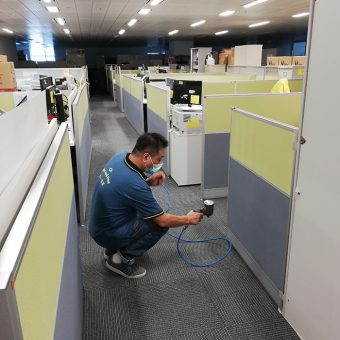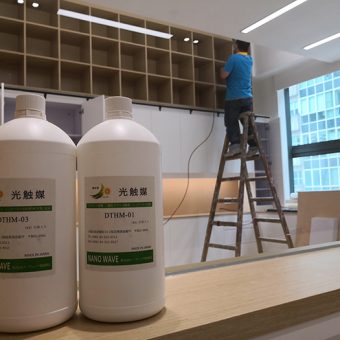Photocatalytic disinfection
Photocatalytic disinfection Photocatalysis effectively kills multiple bacteria with an antibacterial rate of up to 99%.
✔ The product is directly imported from Japan, ensuring safety.
✔ The product has been tested by the Photocatalytic Industry Association of Japan (PIAJ).
✔ The certification is conducted by the Japan Photocatalysis Product Technology Association (SITPA).
✔ It can effectively degrade toxic gases in the air, and kill multiple bacteria with an antibacterial rate of up to 99%.
✔ Safety: non-toxic and harmless, safe for human body, and does not cause secondary pollution.
✔ High efficiency: photocatalysis can purify and eliminate pollutants at low concentrations.
✔ Durability: the product can withstand weather tests and comprehensive damage caused by physical wear and tear, temperature changes, etc.
✔ It has functions such as deodorization and anti-pollution, and can decompose toxins released by bacteria.
What is photocatalyst?
Photocatalyst is a type of semiconductor material with photocatalytic functions, typically represented by nanoscale titanium dioxide. It is applied to surfaces using patented technology and equipment to form a thin film.
Under weak light, it can effectively decompose toxic and harmful gases in the air, kill various bacteria, and decompose and neutralize toxins released by bacteria or fungi.
The disinfection principle of photocatalyst:
Under light irradiation, photocatalyst undergoes a photocatalytic reaction similar to photosynthesis, catalyzing water or oxygen in the air into hydroxyl radicals and superoxide anion radicals with extremely strong oxidation ability, as well as active oxygen species (HO2•, H2O2) with highly oxidative photogenerated reactive groups.
These can destroy the cell membranes of bacteria and coagulate the protein carriers of viruses, leading to effective disinfection.
 9821 8022
9821 8022



